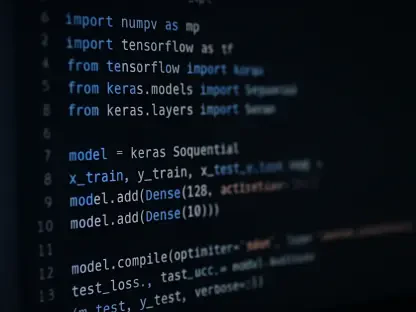Agentic AI evolved through a series of clear milestones. In the early 1990s, robotics researchers tested multi-agent systems inside simulated factories, where each software unit pursued a goal and coordinated with its peers. Two decades later, consumer voice assistants like Siri, Alexa, and others, brought task automation to everyday devices, though every response still depended on a predefined script.
Agentic AI has moved from theory and pitch decks into early production systems. Now, though still limited, the technology is deployable and practical, and it compels many development teams to re-evaluate automation in 2025—and rightly so.
While early AI tools followed a reactive model and operated only when prompted, Agentic AI introduces a proactive model. This means that the system identifies goals, breaks them into tasks, and carries out those tasks on its own. This progression from reactive to proactive design marks the current phase of AI.
Continue reading to explore the current trajectory of Agentic AI in development and uncover:
Where it already delivers measurable value;
Steps for advancing your own deployments;
A look at emerging research directions;
And more.
What Agentic AI Was Created For
Early advocates positioned agentic AI as the practical next step beyond narrow models. A goal-seeking agent runs in production without the stack of hard-coded if/then rules that slow many back-office scripts. For a product team, that shift replaces twenty separate workflows with one adaptive component. Operations leaders, on the other hand, value an agent that spots the next process to automate and then builds the procedure itself. Lastly, marketing groups expect similar gains from real-time personalization across complex customer journeys.
In addition, self-learning was a central promise. Agentic AI would execute tasks and improve performance over time. It monitors results, analyzes patterns, and adjusts strategies, compounding value without manual reprogramming or constant supervision. The result is an operational layer that improves continuously.
However, delivering on this vision introduces a critical dependency challenge. In fragmented environments where data is siloed, outdated, or inconsistent, the agent’s decision-making deteriorates. Without reliable and comprehensive inputs, even the most advanced agent risks reinforcing inefficiencies, making flawed assumptions, or acting on incomplete information.
Where Agentic AI Is Currently Winning
Open-source frameworks such as AutoGPT, BabyAGI, and AgentGPT launched the first wave of hands-on trials. Each framework accepts a single high-level goal, breaks it into smaller objectives, and handles the work through its own plan-and-reflect loop. The loop is imperfect, yet it proves that autonomous task execution works in practice.
Enterprise software vendors have begun folding this pattern into their products. Microsoft Copilot now offers goal-oriented commands, project-management suites are testing agent pilots, and GPT-native CRM workflows already move beyond static prompts.
Multi-agent teams add another layer. One agent retrieves documents, a second produces summaries, and a third assembles a slide deck. The approach mirrors the handoffs that occur in cross-functional teams and is now under review in sectors such as pharmaceuticals, legal technology, and advanced manufacturing.
Vertical applications now deliver concrete results. In e-commerce, autonomous pricing agents review competitor catalogs in real time and update listings on each marketplace. Customer-service teams use agentic bots that close routine tickets, escalate complex cases, and rewrite policy documents as support trends shift. Sales and marketing groups rely on goal-seeking tools that generate campaign variants, A/B-test landing pages, and push live optimizations across channels. These systems run in production today, and vendors already offer APIs, integration connectors, and managed support.
The Future Is When Things Get Real, and a Bit Messy
Alignment is the most pressing concern. An agent needs a clear, measurable goal. Vague instructions create unpredictable outputs and can produce spam when asked to “increase engagement.” These errors stem from the open-ended autonomy itself, not from isolated bugs.
Large language models, which can hallucinate, are still sit at the core of most agentic systems. A single hallucination in a workflow may trigger wrong decisions, break processes, or violate compliance. It’s important you keep in mind that confidence in the language does not equal reliability.
Agentic loops run continuously. Planning, acting, reflecting, and repeating draw heavy compute resources and consume API tokens quickly. At scale, operating costs can rise beyond budget targets. Autonomous agents act for human users, which introduces legal, ethical, and brand risks. Any agent that posts publicly, deletes files, or approves transactions must be auditable, explainable, and accountable. Current platforms rarely meet this standard, highlighting the need for stronger design controls, clearer regulations, and better governance.
Now What?
Despite the blockers, the momentum is undeniable. Agentic AI is becoming foundational to modern software architecture. It’s no longer a standalone feature—it’s a design pattern. That means product teams, IT leaders, and marketers need to adapt quickly.
To move forward, developers need to embed stronger alignment protocols, better memory structures, and traceable decision logic into their agents. Vendors need to prioritize cost optimization, safety controls, and clearer integration routes. And companies using agentic AI need to invest in oversight—not just monitoring outputs, but understanding how decisions are made, who benefits, and what risks exist downstream.
Autonomy isn’t a free upgrade. It’s a shift in responsibility, intent, and complexity. The best use cases today are those that live within strong guardrails—where autonomy enhances performance, not unpredictability.
Agentic AI’s Operator Days Are Ahead
Momentum keeps building. Agentic AI now sits at the core of modern software design, no longer a bolt-on feature. Product teams, IT leaders, and marketers need to adapt. Developers should add clear alignment checks, stronger memory, and detailed decision logs.
Vendors must cut compute costs, enforce safety controls, and publish integration guides. If you deploy agentic AI, invest in oversight: trace decisions, map benefits, and review downstream risk. Autonomy shifts responsibility and complexity. Work with use cases that stay inside strict guardrails, so the agent improves performance instead of adding volatility.
More importantly, oversight is mandatory for agentic AI. Implement processes that trace major decisions, map outcomes to strategic objectives, and assess downstream risk before issues escalate.
Without common standards for agent-to-agent interaction, these systems risk working at cross purposes, duplicating effort, or even triggering conflicting actions in shared environments. That’s why automation leaders must rethink their efforts to make the most of Agentic AI today—and in the future.









